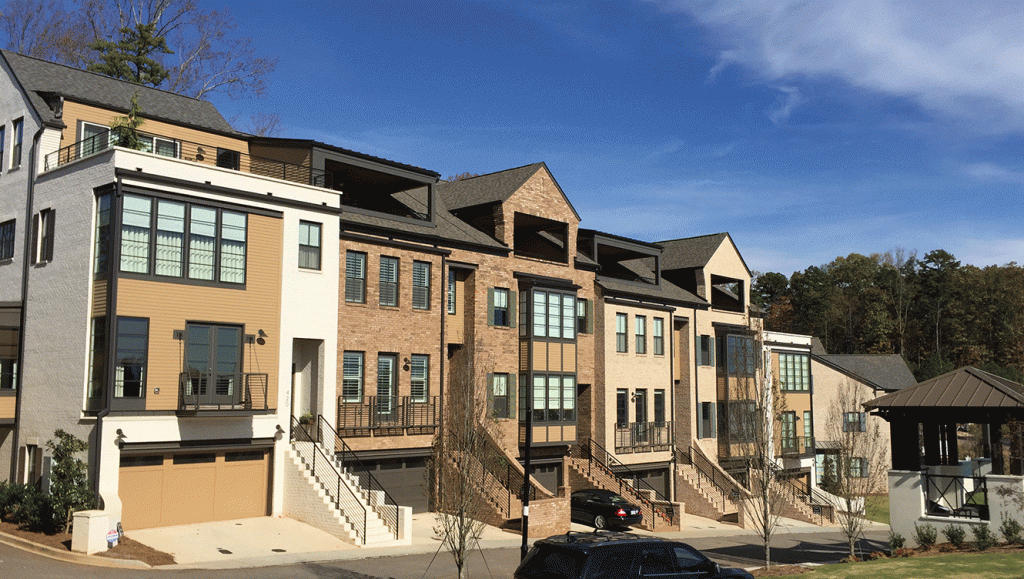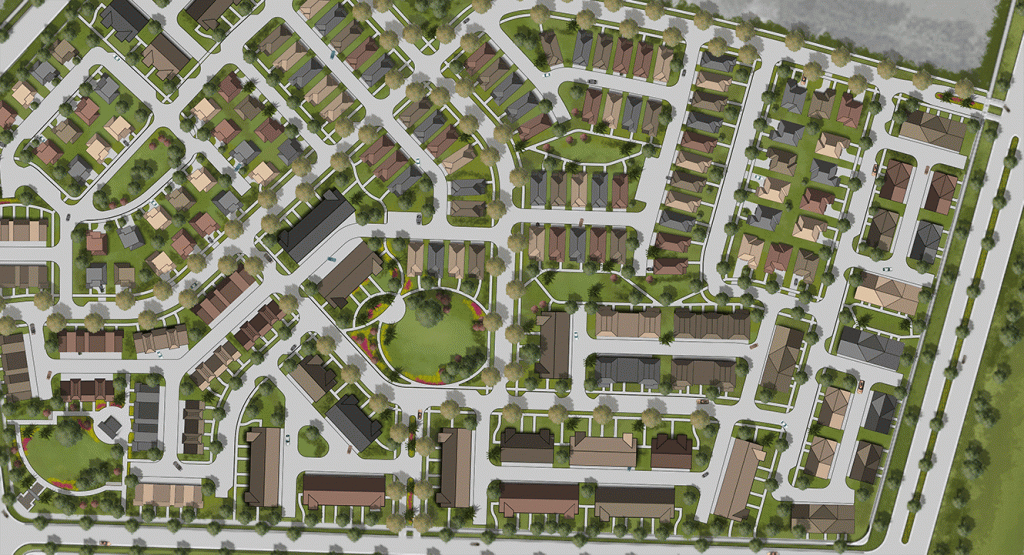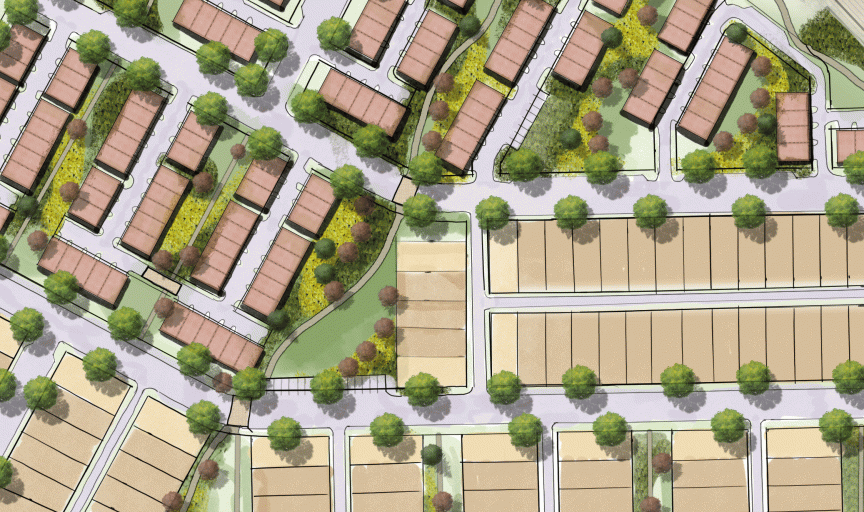A Neighborhood Mosaic: Product Variety without the Headache
Sites are smaller, and buyers expect an urban lifestyle – even in suburban locations. This can be achieved through a mix of higher-density products, varied streetscapes and purposeful open spaces. On the surface, these are familiar goals. So how can volume builders and developers mix housing to match the pace of their business plans?
Prior to site plan and product design, spend time examining your expectations. Does this neighborhood need to be highly eclectic because of the surrounding context? Is this a suburban environment where the buyer requires consistency? What standards need to be challenged to create “urban appeal”?
Once goals are set, benchmark against these 3 key solutions:
1. Be Cautious with Diversity – There are many ways to create “urban appeal”. Neighborhood size, builder mix, product types, street patterns, setbacks, floorplans and elevation styles are all at your fingertips. Place emphasis on a few of these tools to simplify the solution. Otherwise, the solution becomes too complex to manage.
 2. Challenge Conventional Repetition Requirements – Use elevation and floorplan variety to your advantage and challenge the conventional approach. By mixing products, the repetition requirements will need to be different. Consider using color, materials and contemporary detailing in lieu of conventional repetition.
2. Challenge Conventional Repetition Requirements – Use elevation and floorplan variety to your advantage and challenge the conventional approach. By mixing products, the repetition requirements will need to be different. Consider using color, materials and contemporary detailing in lieu of conventional repetition.
3. Give Builders Space – A confetti approach to variety assumes that builders and product are mixed on a lot-by-lot basis. This is difficult to sequence and orchestrate. Instead, provide a blocking pattern that will give each builder a mix of product types. This establishes a critical mass for each phased take-down, while incorporating variety and interest throughout the neighborhood.
Creating urban appeal is often accomplished with higher-density solutions, using both attached and detached products. These solutions require an integrated and collaborative team to avoid some common mistakes.
Following are additional considerations for these neighborhoods:
4. Make Grading Your Friend – Even on “flat” site, awkward grading transitions will show up. This needs to be regular dialogue between planner, architect and engineer to use grade to your advantage. Avoid the temptation that the solution is either a horizontal or vertical solution. The best solutions are often a combination of house and site that will prove most cost effective and visually appealing.
5. Manage Streets – Oversized streets greatly impact density, cost and the placemaking opportunities. When the dimensions between the buildings are too large, the solution often feels suburban even though the product type is a higher density attached or detached product. If your municipality doesn’t have appropriate street sections for density solutions, find a consultant that will help provide current examples.
6. Celebrate Stormwater – Integrate stormwater and useable open space when possible. Introducing micro-basins, rain gardens, pervious paving and urban bio-swales help to soften a higher density solution. Underground vaults are becoming cost-effective solution to regain valuable space.
7. Protect Private Outdoor Space – As we strive for higher density solutions, the private outdoor spaces are often compromised. Finding meaningful spaces within the footprint or at ground level are critical to providing a livable environment.
8. Right-size Open Space – Highly appointed open space has a big impact. Pocket parks create a place to enjoy a few minutes outside, read the mail or chat with a neighbor. This space can be flexible enough to accommodate a variety of activities but scaled in a way that it doesn’t feel vacant…big trees help!
9. Scrutinize Crucial Front Zone – The space between the back of sidewalk and front door is one the most overlooked zones along the street. In successful higher-density solutions, proper layering of walls, fencing, plant material and patios can animate the street edge and take the pressure off the architectural elevations to create variety along a street.
Don’t be afraid of product variety within a neighborhood. These solutions help unlock access to a buyer who is looking for neighborhoods that have an urban appeal


 BACK TO BLOG
BACK TO BLOG